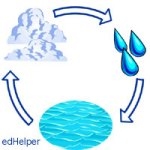
Worksheets and No Prep Teaching Resources
Reading Comprehension Worksheets
Water

Water
 Worksheets and No Prep Teaching Resources Reading Comprehension Worksheets Water |
 Water |
| edHelper's suggested reading level: | grades 5 to 7 | |
| Flesch-Kincaid grade level: | 6.49 |
|
River Patterns
By Trista L. Pollard |

|
 |
Create Weekly Reading Books
Prepare for an entire week at once! |
| Leave your feedback on River Patterns (use this link if you found an error in the story) |
 |
Water
|
 |
Science
|